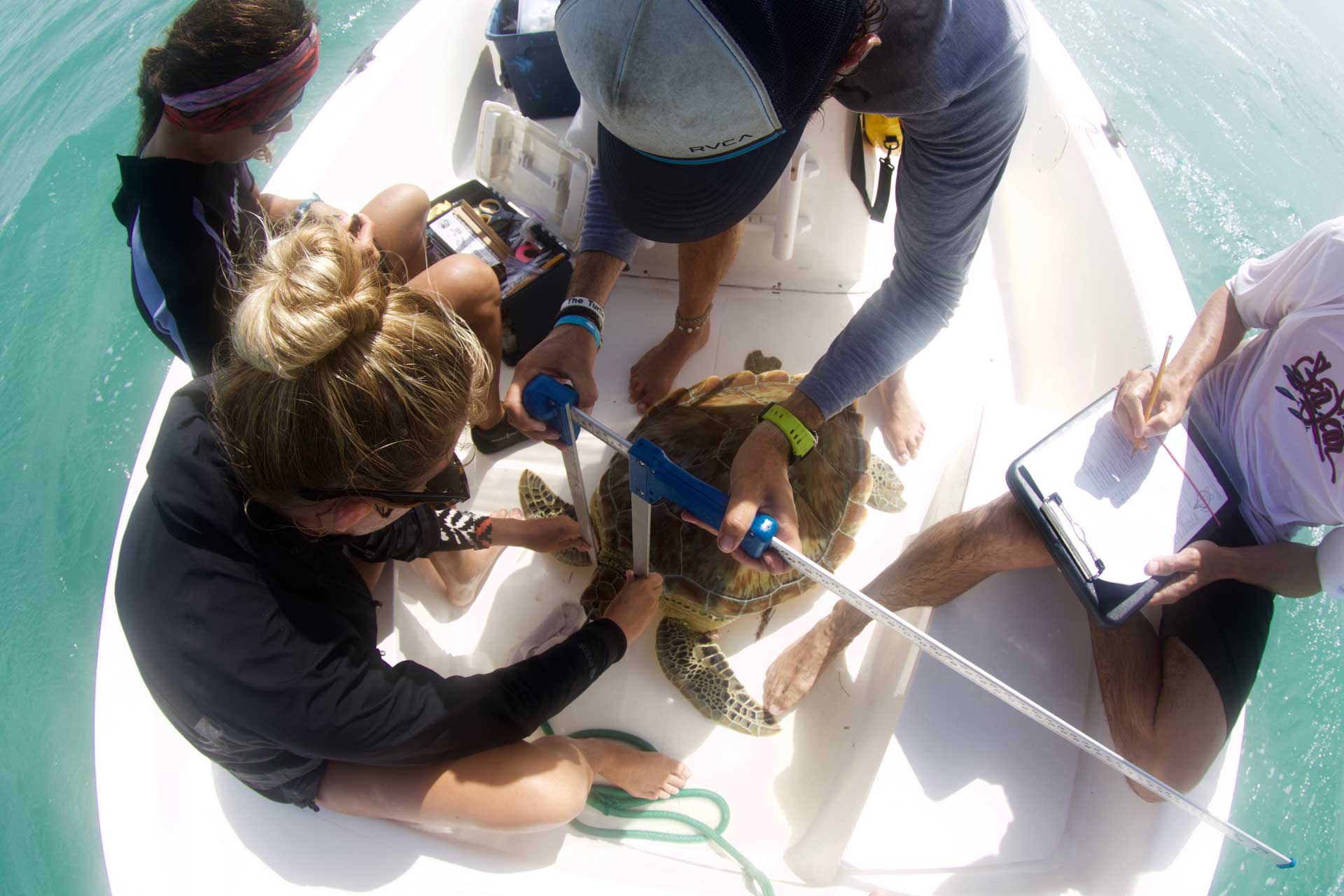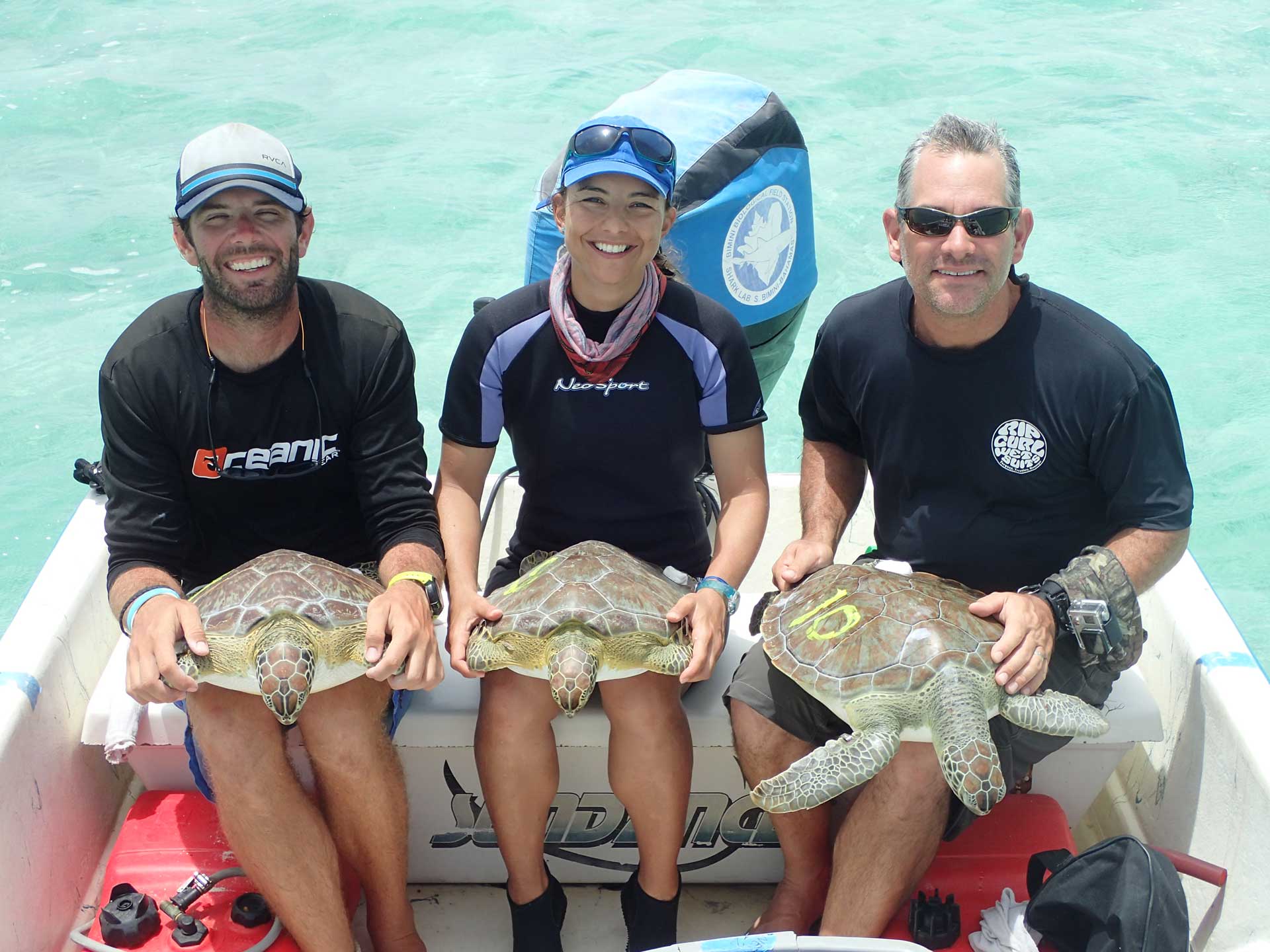Turtle–shark interactions
Bimini, in The Bahamas, is the perfect place to explore the interactions between turtles and sharks. It is an important habitat and nursery area for an incredible diversity of species, including threatened marine turtles and tiger and bull sharks, which have been documented to prey on turtles. To explore the interactions between turtle and sharks we took advantage of the existing array of acoustic receivers at Bimini and an ongoing project by the Bimini Biological Field Station (or Shark Lab) that is currently following acoustic-tagged sharks. Our team set out to fit acoustic tags to turtles so that we could study potential interactions between turtles and sharks.
To be able to deploy our acoustic tags, we first had to find the turtles. Juvenile green turtles are often seen in the waters around Bimini, but to date no study had systematically determined their distribution. We set off to conduct vessel transects and when we caught sight of a turtle we used the rodeo technique to catch it. This involves following the turtle and then jumping off the bow of the boat to catch it. It’s certainly an exciting way to catch a turtle!
During our first three days at Bimini we identified three areas with high turtle density and were able to catch 11 turtles and fit them with acoustic transmitters. Unfortunately, Tropical Storm Colin was approaching Florida and as the winds picked up to 20 knots it became almost impossible to follow any turtles. We were determined, though, and on one of the days we still went out and managed to catch a turtle. At 58 centimetres curved carapace length, it was the largest one we caught and brought our total to 12 turtles.

Taking and recording the turtle's measurements. Photo © Mariana Fuentes
Our team is currently in Bimini for the month of July to fit more acoustic tags to turtles. In the meantime, the acoustic receivers will be recording information every time a tagged turtle or shark swims by.

Mariana and her team with a few of their tagged turtles. Photo © Mariana Fuentes
